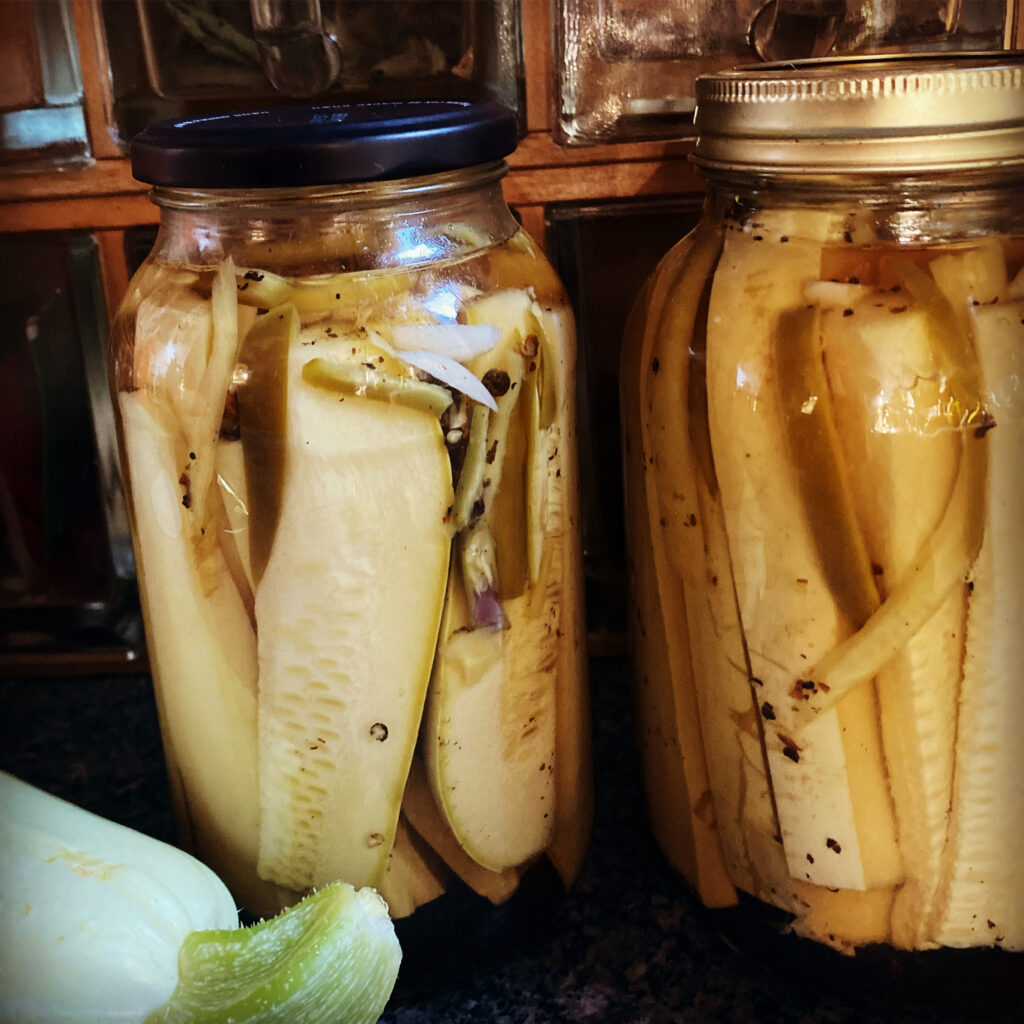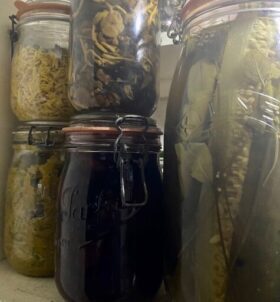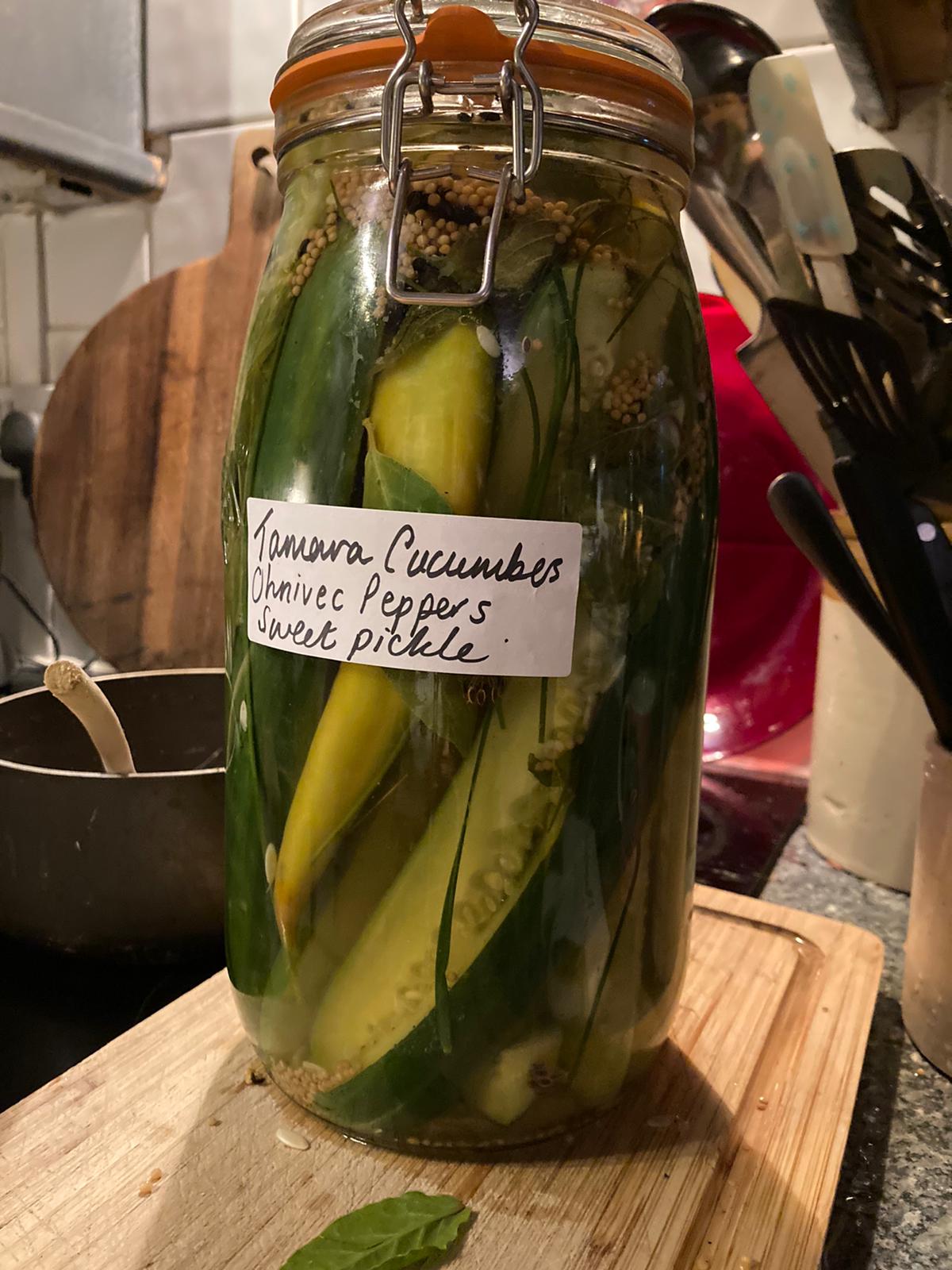Last night I came home after a very long day at the work, Winter’s cold edges continuing to prickle the air and the evenings still very gloomy and dark. I made a quick stop at my local mini market to pick up a pint of milk and a bit of cheese from their cold shelves. A stream of blinkered shoppers were ahead of me groping the rows of overpriced, pre-packaged ready meals including imported veg, shepherd pies, lasagnes, and quiches; the hunter gatherers of our times, piling up their black plastic shopping baskets to quickly seize an easy option for their supper.
This mechanical approach to acquiring food I fully recognised and have readily participated in, yet lately I’ve come to see the banality of this way of living; a grope in the dark for some sustenance; a mindless action with no care for the origin, production, or source of the pre-packaged food that we are about to consume, not to mention the grave ecological issues involved in such large-scale consumerism.
I headed home, feeling decidedly relieved and dare I say it, a bit smug that for the first year, since striving towards a more self-reliant way of living, I had a freezer and pantry brimming with my very own homegrown, homemade ready meals to choose from.
These dark short days we are currently experiencing, are known as the Hungry Months when the garden is dormant and the fields, hedgerows and woodlands are in hibernation. Modern humans will respond to this pause by continuing to seek out instant gratification from those giant cathedrals of consumerism. Yet B.S. (before supermarkets), we relied on the contents of our pantries to fill the gaping void that these hungry months bring.
Our ancestors would be more in tune with the seasons, always thinking ahead and monitoring their needs in relation to the time of year. For instance, during the seasons of plenty i.e., spring to autumn, humans would work intensively both in communities, homesteads, and individually to preserve, pickle, ferment, bottle, brew, salt, cure, smoke, dry and can their produce. A singular collective focus to preserve food, as wastage was just not an option.
For storage, environments were adapted to support the process e.g. Before refrigeration and freezing became widely available the kitchens and larders would be built on the north side of the home, the coolest part of the house, and root cellars or ground fridges dug out for the same reason.
B.S., throughout the year, communities would share and exchange their produce, balancing and nourishing their societies and raising their spirits. Indeed, in medieval times, the largest sharing festival was the winter solstice with 12 days of feasting and celebrating, which eventually became, what we now know, as Christmas.
It seems that different cultures have developed a wealth of distinctive techniques for preserving the foods they value for instance people of the South Indian subcontinent – India, Pakistan, Nepal, Bangladesh uses mustard and sesame oil as their main preservatives. The famous Indian Mango Pickle has been popularized all over the world for its unique flavour, a product of needing to conserve a glut of fruits.
Salt and vinegar are the base ingredients for preservation in European and East Asian countries, the worldly renowned sauerkraut from Germany and Kimchi from Korea are prime examples of this. Yet there are extreme cultural crossovers such as the famous British chutney which was founded in India and the Latin America’s escabeche has its roots in the medieval Middle Eastern recipes.
It seems that despite this human need to conserve and sustain food, human beings have also sought to enhance and add flavour and zest to it. Therefore, pickles really do hit the spot when it comes to our tastebuds and can enliven a daily meal such as my own last night, where I generously accompanied a baked potato with a plethora of flavours, direct from a row of colourful Kilner jars sitting to attention in my larder or fridge: Pickled courgettes, beetroot Kimchi, curried parsnip Kraut, rampion pesto and mushroom relish. An array of savoury flavours and textures, both satisfying and exciting…
Eating a meal with my partner, James the primary gardener and forager in our team, we have come to love and savour every mouthful, sharing and acknowledging the ingredients and origins of each creation, whether it came from our allotment, the makeshift, lean-to polytunnel at the side of our cottage, or wild foods discovered on a foraging quest through the woods. Taking joy in the fact that the ingredients are not only organic and free but totally homemade.

Inspired by Sandor Katz’s and Martha J Cummings books on fermenting and preserving, we felt ready to attempt a full-on production line. We’d saved and acquired as many jars as we could, making our own vinegar and drying our herbs.
However, we were quickly taken aback by the sheer abundance of the bountiful crops of fruit, veg and wild mushrooms, that James harvested and foraged last year. I found myself up to my ears in brine and vinegar, spending all my spare hours chopping, blanching, canning, bottling, and drying produce over our little wood burning stove (before we acquired a dehydrator), and generally focussing all my attention on the conservation of our bounty.
It was a truly mammoth task and made me realise how hard our ancestors with larger families, would have worked at harvest, just to make sure that all mouths were fed during those hungry months ahead.
Some of the preserves we made in 2022: –
– Cucumber With Dill and Mustard Seed
– Hot Chilli Peppers
– Courgette And Fennel with Spring Onions
– Parsnips With Peppercorn and Chillies
– Beefsteak Mushroom Relish
– Runner Bean Chutney
– Cherry Tomatoes in Brine with Rampions
– Beetroot Kimchi
– Cabbage Kimchi
– Pickled Onions
– Nasturtium Capers in Brine
– Pickled Chanterelles with Thyme A Bay Leaves
– Mushroom Ketchup
– Caramelised Onion and Beetroot Relish
– Pickled Saffron Milk Cap Mushrooms
– Root Vegetable Kimchi
– Porcini Mushrooms in Oil with Garlic and Peppercorns
– Dover House Chutney made with Apples and Onions
– Aubergines in Oil with Comfit Lemon and Chillies (a recipe shared by our Moroccan friends)
All the above can be eaten as mentioned to accompany a baked potato or with pasta or rice. They are particularly delicious in the centre of an omelette or crepe, or a burger also try adding them soups or stews to enhance the flavour.

Beetroot Kimchi
This is one of my favourites and has a great colour and rich flavour. In addition, Kimchi, which is a Korean delicacy, is extremely healthy, said to have anti-aging qualities; a lacto-fermentation which means its full of probiotics with antioxidant and anti-cancer properties.
PREP TIME: 2 hrs + 5 days fermentation
Ingredients:
4 medium beet roots peeled
1/4 cup iodine-free sea salt or kosher salt
For the Paste:
1 tbsp potato flour
1 tsp brown sugar
1 tbsp grated garlic (4-5 cloves)
1 tsp grated peeled fresh ginger
1 small onion
2 tbsp fish sauce
2 tbsp soy sauce
2 tbsp red pepper flakes (or Korean gochutgaru)
Optional:
4 medium scallions, trimmed and cut into 1-inch pieces
X 1 cup daikon radish, peeled and cut into matchsticks
1/2 cup carrot, peeled and cut into matchsticks
Method:
1. Cut the beetroot in very thin slices, sprinkle over with salt and massage the salt into each of them. Then add enough water to cover the vegetables and stand for 1 to 2 hours. Rinse and drain the beetroot and set aside to drain in a colander for about 15 to 20 minutes.
2. Meanwhile, make the spice paste. Mix the water and flour together and bring to boil then add sugar, mix well before setting aside. Let it cool then place it in a food processor.
Now add the garlic, ginger, and onion to a food processor and mix. Add the fish sauce and stir it into a very smooth paste.
Now Stir in the gochutgaru & set aside until the beetroots are ready to use.
Combine the vegetables (carrot, daikon, green onions) and spice paste.
3. Add the spice paste to the beetroot. Mix thoroughly in a bowl using your hands (you can use gloves) until all beetroot are thoroughly coated.
4. Now Pack the beetroot kimchi into the jar. Press down on the kimchi until the brine rises to cover the vegetables, making sure to leave at least 1 inch of space at the top. Leave the cover on top but do not seal the jar. Leave for 3-5 days room temperature, then refrigerate.
You can eat this with anything you like including rice, noodles, burgers, in a sandwich or just as salad or side dish.
If you are interested in learning more about Kimchi and other ways to ferment, pickle or preserve, please click on the link below:

No responses yet